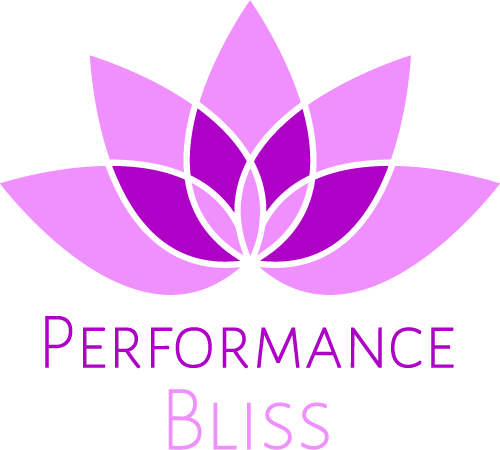In a fast-paced and competitive business environment, organizations must constantly seek ways to improve employee performance and overall productivity. One of the most effective strategies for driving this continuous improvement is through the use of feedback management tools. These tools not only streamline the process of delivering feedback but also provide managers with powerful data to track and analyze employee performance over time.
By implementing feedback management tools, companies can create a culture of continuous feedback, motivate employees to improve, and ensure that development is an ongoing process rather than a once-a-year event. In this article, we’ll explore how feedback management tools can drive continuous improvement and support employee growth, highlighting how Performance Bliss can subtly integrate into this framework to enhance feedback practices.
The Role of Feedback in Driving Employee Growth
Feedback is a critical driver of employee development. Without clear and constructive feedback, employees may struggle to understand how they can improve or where they excel. Traditionally, feedback was limited to annual or semi-annual performance reviews, but in today’s dynamic work environment, that model no longer meets the needs of modern teams. Employees require ongoing feedback to stay motivated and aligned with organizational goals.
When delivered consistently and constructively, feedback serves as a compass that guides employees toward their full potential. This is where feedback management tools come into play. By automating and organizing the feedback process, these tools ensure that employees receive timely, relevant input on their performance, making it easier for them to take actionable steps toward improvement.
How Feedback Management Tools Foster Continuous Improvement
The key to continuous improvement lies in the ability to provide consistent, timely feedback. Feedback management tools make this possible by creating a structured process for managers to deliver feedback, track employee progress, and monitor performance trends. Here are some of the ways these tools support continuous improvement:
Real-Time Feedback
One of the most significant benefits of feedback management tools is their ability to facilitate real-time feedback. Instead of waiting for formal review periods, managers can provide immediate feedback when an employee completes a task or project. This allows employees to make adjustments in the moment, leading to faster improvement and more efficient workflows.
Clear Performance Tracking
Feedback management tools often include dashboards that track employee performance over time. Managers can use these features to visualize performance trends, identify areas for improvement, and recognize top performers. By having access to this data, managers can make informed decisions about development opportunities, promotions, and potential skill gaps that need to be addressed.
Goal Alignment and Progress Monitoring
Continuous improvement depends on clear goals. Feedback management tools allow managers to set specific, measurable goals for their employees and track progress toward those goals in real-time. This transparency helps employees stay focused on their objectives while providing managers with the data they need to offer targeted support and guidance.
Structured Feedback Cycles
With feedback management tools, companies can establish structured feedback cycles that ensure employees receive regular input on their performance. These cycles can be weekly, monthly, or quarterly, depending on the organization’s needs. Having a consistent feedback loop creates a rhythm of accountability and growth, as employees always know when they can expect feedback and can work toward meeting their goals.
Performance Bliss is an example of a platform that integrates these features, offering tools that support real-time feedback, goal tracking, and structured performance reviews. By using Performance Bliss, managers can foster a culture of continuous improvement while simplifying the feedback process.
Feedback Management Tools for Better Performance Analysis
Effective feedback is not just about delivering comments; it’s about understanding the bigger picture of employee performance. Feedback management tools provide the analytics and reporting features that managers need to gain a comprehensive view of how their team is performing. Here’s how these tools contribute to performance analysis:
Data-Driven Insights
Feedback management tools collect data over time, allowing managers to spot trends and patterns in employee performance. For example, a tool might reveal that an employee consistently excels in project management but struggles with time management. This insight can help managers tailor their feedback to address specific areas of improvement.
Customizable Reports
Many feedback management platforms offer customizable reporting features, allowing managers to generate detailed performance reports for individual employees or entire teams. These reports provide a clear picture of each employee’s strengths and weaknesses, helping managers create targeted development plans that support continuous improvement.
Identifying High Performers
Another advantage of feedback management tools is their ability to highlight high-performing employees. By tracking performance data over time, managers can easily identify top contributors and reward them accordingly. Recognizing and celebrating employee achievements is a key factor in maintaining engagement and motivation.
Objective Evaluation
Feedback management tools help eliminate biases in the evaluation process by providing objective data. Instead of relying on subjective opinions or incomplete information, managers can use concrete performance metrics to evaluate their employees. This makes the review process fairer and more transparent, ultimately leading to better development outcomes.
Using platforms like Performance Bliss can enhance this process by offering managers the ability to analyze performance trends with ease, ensuring that feedback is grounded in accurate and actionable data.
How Feedback During Reviews Supports Employee Development
Performance reviews are an essential opportunity for managers to provide in-depth feedback, but they are often viewed with trepidation by employees. The key to turning these reviews into a positive experience is to focus on how feedback can support employee development rather than simply critiquing past performance. Here’s how feedback during reviews can motivate and guide employees toward growth:
Constructive Criticism
Constructive criticism is the foundation of any useful performance review. When feedback is framed in a way that highlights areas for improvement while also providing actionable steps for growth, employees are more likely to feel motivated and supported. For example, instead of saying, “You need to communicate better,” a manager might say, “I’ve noticed that some of your emails to clients are too technical. Let’s work on simplifying the language to make them more accessible.”
Focus on Strengths
Employee development isn’t just about addressing weaknesses; it’s also about building on strengths. Feedback during reviews should include recognition of an employee’s achievements and positive contributions. When employees see that their strengths are valued, they become more engaged and motivated to continue excelling.
Actionable Goals
Setting clear, actionable goals during reviews is one of the most effective ways to support employee development. Feedback should be linked to specific objectives that give employees a clear sense of what they need to do to improve. These goals should be measurable and time-bound, ensuring that progress can be tracked and evaluated over time.
Ongoing Support
Feedback doesn’t end with the review. Managers should offer ongoing support, providing resources, coaching, and mentorship to help employees meet their development goals. This creates a partnership between the manager and employee, where both are invested in the individual’s growth and success.
Platforms like Performance Bliss help facilitate these conversations by providing the tools managers need to document feedback, track goals, and ensure that development plans are followed up on after reviews.
Creating a Culture of Continuous Improvement with Feedback Management Tools
One of the most valuable outcomes of implementing feedback management tools is the creation of a culture of continuous improvement. In organizations where feedback is ongoing, structured, and data-driven, employees are more likely to feel engaged, motivated, and committed to their development. Here’s how feedback management tools help create this culture:
Regular Feedback Cycles
When feedback is provided regularly, employees have more opportunities to learn and grow. Feedback management tools make it easy to establish and maintain regular feedback cycles, ensuring that employees receive input consistently.
Transparency and Accountability
Feedback management tools promote transparency by making performance data accessible to both managers and employees. This helps employees understand where they stand and what they need to do to improve, while also holding them accountable for their progress.
Focus on Development
Continuous improvement requires a focus on development rather than just performance evaluation. Feedback management tools support this shift by allowing managers to track growth over time, providing employees with the support they need to reach their full potential.
Encouraging Collaboration
Finally, feedback management tools foster collaboration between managers and employees. When feedback is delivered in a constructive, supportive way, employees are more likely to engage in open conversations about their development and work together with their managers to achieve their goals.
Performance Bliss is designed to help companies build this culture by integrating feedback, performance tracking, and development planning into a single platform, ensuring that feedback becomes a driving force for improvement.
Conclusion: Feedback Management Tools as a Catalyst for Continuous Improvement
Incorporating feedback management tools into an organization is one of the most effective ways to drive continuous improvement. These tools streamline the feedback process, provide valuable performance insights, and help managers deliver constructive, actionable feedback that supports employee development. By creating a culture of continuous feedback and improvement, companies can enhance employee engagement, increase productivity, and foster a work environment where growth is a constant priority.
Platforms like Performance Bliss play a crucial role in this process, offering managers and employees the tools they need to make feedback meaningful, actionable, and aligned with long-term goals. With the right feedback management tools in place, organizations can turn everyday feedback into a powerful engine for growth.


